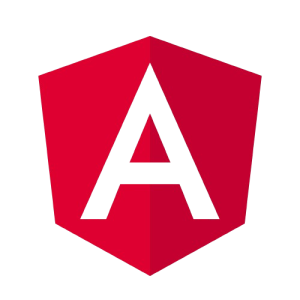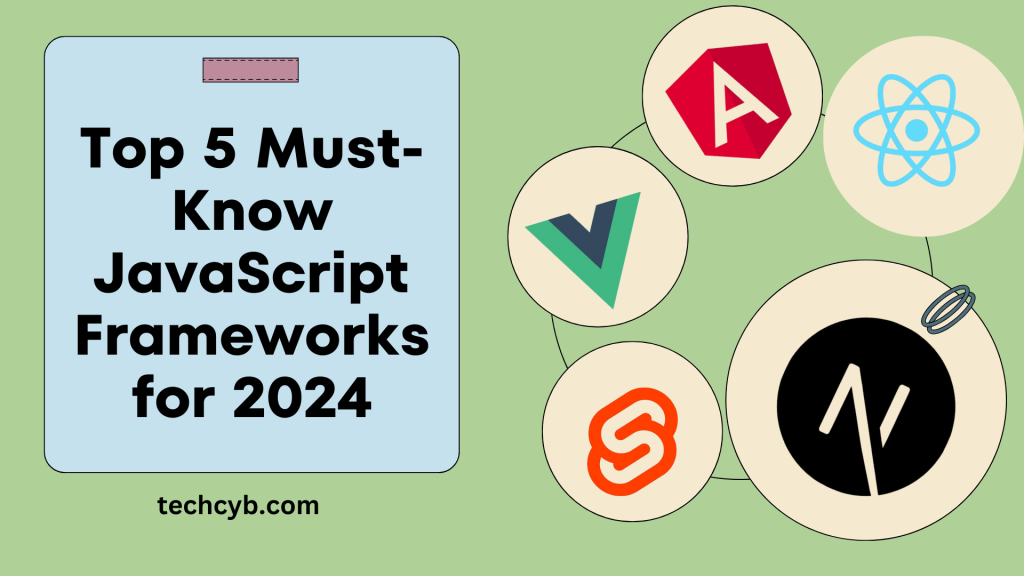JavaScript frameworks continue to evolve, each bringing new possibilities to the table. As we move into 2024, it’s crucial for developers to stay informed about the most influential frameworks that are shaping the web development landscape. In this article, we’ll dive deep into the top 5 JavaScript frameworks you should be familiar with: React, Angular, Vue.js, Svelte, and Next.js. Each offers unique strengths and benefits that can significantly impact the success of your projects.
React: The UI Powerhouse
React has been a dominant force in the JavaScript world for years, and it shows no signs of slowing down. Created by Facebook, React is renowned for its simplicity, flexibility, and extensive ecosystem. Its component-based architecture allows developers to build complex user interfaces by breaking them down into reusable components. This modular approach not only makes development more efficient but also enhances code maintainability.

Benefits of React:
- Reusability: React’s component-based architecture promotes the reuse of UI components across different parts of an application, reducing development time and effort.
- Large Ecosystem: With a vast library of third-party tools and packages, React offers solutions for almost any challenge you might encounter.
- Community Support: As one of the most popular frameworks, React boasts a massive community, providing extensive resources, tutorials, and support.
Good Sites to Learn React:
- Official React Documentation: The best place to start for beginners, offering a step-by-step guide to understanding React’s core concepts.
- freeCodeCamp: Provides a free, in-depth React course that covers everything from basic principles to advanced techniques.
- Egghead.io: Offers short, focused video tutorials on various React topics, perfect for developers who prefer visual learning.
Angular: The Enterprise Workhorse
Angular, developed by Google, is a comprehensive framework designed for building large-scale, enterprise-level applications. Unlike React, which is more of a library, Angular is a full-fledged framework that provides everything you need out of the box—from two-way data binding to dependency injection and a powerful command-line interface (CLI).

Benefits of Angular:
- All-in-One Solution: Angular includes a wide range of built-in features, reducing the need for third-party libraries and tools.
- Strong Typing with TypeScript: Angular is built with TypeScript, a statically typed language that catches errors at compile-time, making your code more robust and easier to maintain.
- Scalability: Angular’s structure and tools are designed to handle the complexities of large applications, making it a preferred choice for enterprise solutions.
Good Sites to Learn Angular:
- Angular Official Documentation: Offers comprehensive guides and tutorials, from the basics to advanced features.
- Angular University: A platform dedicated to teaching Angular, offering both free and paid courses that cover all aspects of the framework.
- Pluralsight: Provides in-depth Angular courses that cater to all skill levels, perfect for developers looking to master the framework.
Vue.js: The Progressive Framework
Vue.js is known for its gentle learning curve and flexibility, making it an excellent choice for developers of all levels. Unlike Angular, Vue.js is incrementally adoptable, meaning you can introduce it to a small part of your project and gradually scale it up as needed. This flexibility has made Vue.js a popular choice for both small projects and large applications alike.

Benefits of Vue.js:
- Ease of Learning: Vue.js is intuitive and straightforward, making it easy to pick up for developers who are already familiar with HTML, CSS, and JavaScript.
- Incremental Adoption: You can use Vue.js for just a part of your app or the entire project, depending on your needs.
- Reactive Data Binding: Vue.js’s reactive data binding simplifies the process of synchronizing data between the UI and the underlying logic, reducing the amount of boilerplate code.
Good Sites to Learn Vue.js:
- Vue.js Official Documentation: A well-organized and thorough resource for learning Vue.js from scratch.
- Vue Mastery: Offers high-quality video courses on Vue.js, ranging from beginner to advanced levels.
- The Net Ninja on YouTube: Provides a free, beginner-friendly video series that covers all the basics of Vue.js.
Svelte: The New Contender
Svelte is the new kid on the block, offering a revolutionary approach to building web applications. Unlike traditional frameworks that work in the browser, Svelte shifts the bulk of its work to a compile step that happens during build time. This results in faster, smaller, and more efficient apps, as there’s no need for a virtual DOM or framework-specific runtime.

Benefits of Svelte:
- Less Code, More Speed: Svelte allows you to write less code while achieving the same functionality, resulting in smaller bundle sizes and faster load times.
- No Virtual DOM: By moving work to compile time, Svelte eliminates the overhead associated with virtual DOM updates, leading to smoother, more responsive applications.
- Simple Syntax: Svelte’s syntax is straightforward and easy to grasp, even for developers who are new to modern web development frameworks.
Good Sites to Learn Svelte:
- Svelte Official Tutorial: Provides an interactive learning experience, walking you through the core concepts of Svelte with hands-on examples.
- Svelte School: A dedicated platform offering free courses on Svelte and Sapper, its predecessor.
- LevelUpTuts: Offers video tutorials on Svelte, perfect for visual learners looking to grasp the framework’s fundamentals.
Next.js: The Future of React
Next.js, built on top of React, is quickly becoming the go-to framework for server-side rendering (SSR) and static site generation (SSG). It simplifies the process of creating fast, SEO-friendly websites by providing built-in routing, automatic code splitting, and out-of-the-box SSR. Next.js is particularly well-suited for building high-performance web applications that require fast loading times and excellent SEO performance.

Benefits of Next.js:
- Server-Side Rendering (SSR): Next.js enhances the performance and SEO of your React applications by rendering content on the server before sending it to the client.
- Static Site Generation (SSG): Pre-render pages at build time, resulting in lightning-fast load times and improved user experiences.
- Built-In Routing: Next.js’s file-based routing system makes it easy to create dynamic routes without needing to configure external libraries.
Good Sites to Learn Next.js:
- Next.js Official Documentation: A comprehensive resource for learning how to build powerful applications with Next.js.
- Vercel’s Learn Platform: Offers interactive tutorials and courses on Next.js, directly from the creators of the framework.
- Fireship.io: Provides concise and informative video tutorials on Next.js, perfect for developers looking to quickly get up to speed.
Why Master These Frameworks?
Each of these frameworks offers unique advantages that can elevate your web development projects. React and Vue.js excel in creating dynamic user interfaces with ease. Angular provides a robust solution for enterprise-level applications. Svelte introduces a fresh take on performance and simplicity. Next.js pushes the boundaries of what’s possible with server-side rendering.
By mastering these frameworks, you’ll be well-equipped to tackle any web development challenge in 2024. Whether you’re building small-scale projects, complex enterprise applications, or cutting-edge websites, these tools will help you create fast, efficient, and scalable solutions that stand out in today’s competitive market. For more details about this topic visit the Development Category.
